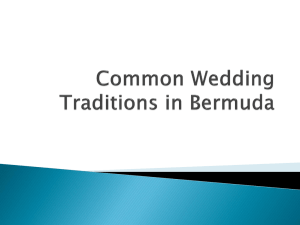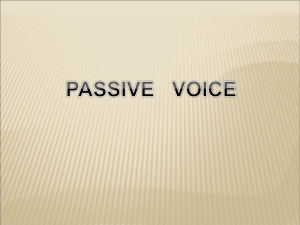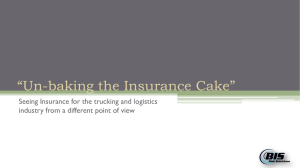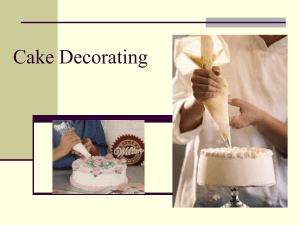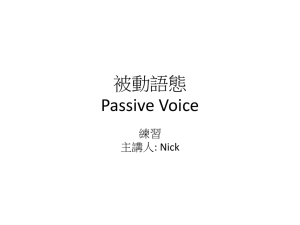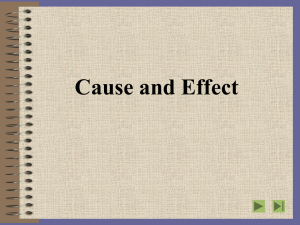gcse_exam_theme_2014_TES
advertisement
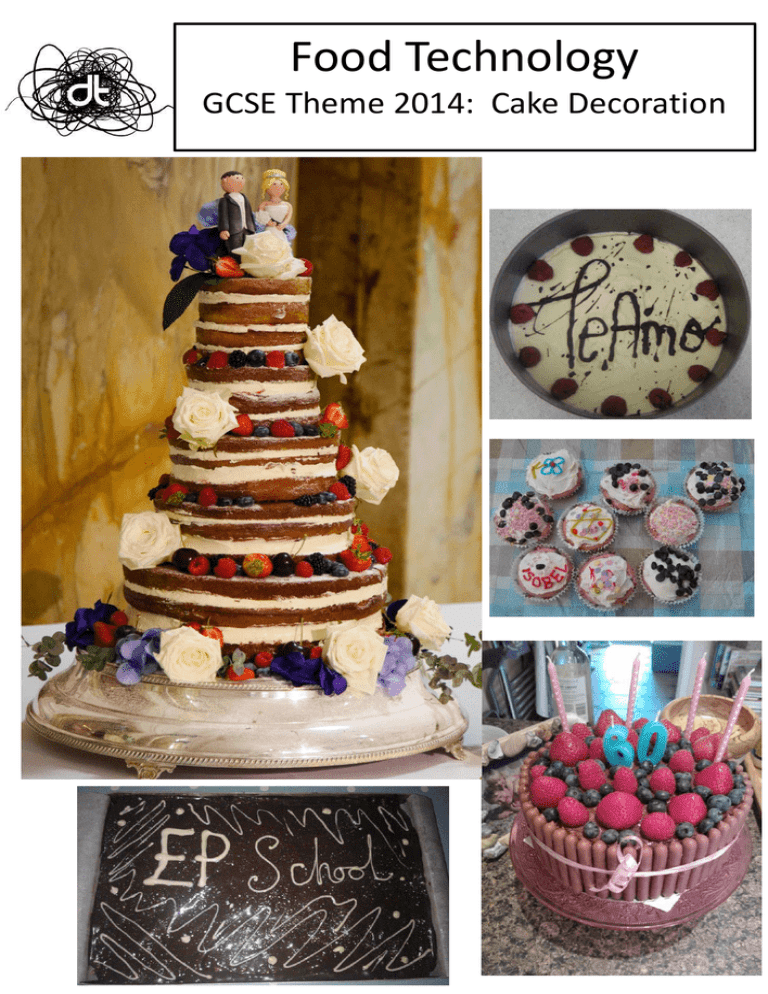
Food Technology GCSE Theme 2014: Cake Decoration Easy Cake Decorating Ideas: General •Whole small berries •Sliced fruit •Frosted fruit •Chocolate dipped fruit •Chocolate piping •Pecan, cashew, or walnut halves •Sliced or slivered almonds •Chopped hazelnuts, pistachios, or peanuts •Toasted or raw flaked or shredded coconut •Gingersnaps •Cream-filled chocolate sandwich cookies Cake Decorating Tip: Be sure to serve cakes embellished with cookies or fresh fruit within two hours. Easy Cake Decorating Ideas: DECORATIONS Check out the baking aisle at supermarkets, crafts stores, or specialty food stores for some of these edible garnishes. Here are a few that you'll find, plus tips on how best to use them: • • • • • • • Silver/gold balls: Available in mixed or single colours, these tiny opaque balls add a touch of colour and texture to your cake. Coloured decorating sugars: Choose from a wide variety of colors of coarse sugars, such as sparkle sugars, or finer-grain sanding sugars to add sparkle to your cake. Pearl sugar: These small, opaque white balls of sugar add a unique texture to cakes. Edible glitter: This flaked coloured sugar adds a glistening look to cakes. Sprinkles: These tiny cylindrical decorations are available in single or mixed colours. Confetti: These colourful, flat cake decorations come in many shapes for just about every occasion and holiday. Cake Decorating Tip: Use stencils to create shapes such as hearts with edible glitter, decorating sugars Easy Cake Decorating Ideas: SWEETS Decorating a cake with sweets and confectionary provides you with tons of creative ideas. Here are a few types of sweets that can easily be arranged to make decorative patterns and borders: • Miniature candy-coated chocolate pieces • Chocolate-covered peanuts or raisins • Jelly beans • Gumdrops • Liquorice strips • Fruit rolls • Peppermint sticks • Whole or crushed maltesers • Sour fruit-flavour straws Easy Cake Decorating Ideas: Add Piping An easy technique to give your cake a sophisticated look is to pipe your frosting through a pastry bag. There are different types of bag tips that will get you different looks on your cake: Round tips are used to make lines, dots, and writing. Star tips are used to create stars, shells, flowers, decorative borders, and rosettes. Leaf tips are used to make leaf shapes. Basket-weave tips are used to make lattices and ribbon like lines and borders. How to Pipe Frosting 1. Fill a pastry bag about two-thirds full of frosting. 2. Fold the corners over, and roll the bag down to the frosting. 3. With one hand, grip the bag near the roll above the frosting. 4. Apply pressure with the palm of your hand, forcing the frosting toward the tip. 5. Use your other hand to guide the tip of the bag. Finishing Techniques: Icing a Cake There are many types of cake icing and each person prefers a different one on their cake. Also, while some are quite easy to make, others will take plenty of time and practice to perfect, not to mention, it can be really intimidating for beginners as well as some of those who have been baking for a long time. Here are the most popular kinds of cake icing that you can use to finish your cakes: 1. Butter Cream Butter cream is made of sifted powdered sugar, milk and superior butter. The quality of butter used will reflect on the appearance, consistency and taste of your butter cream frosting. Children love this type of frosting and is one of the most common types used in cake decorating and the secret is whipping up the butter at the right temperature. Also, since this type of cake icing melts easily in hot weather, the finished cake must be chilled prior to serving to prevent the butter cream frosting from losing its stiffness. 2. Whipped Cream This type of cake icing is achieved using cold heavy whipping cream and sugar. Some would advise you to use powdered sugar but ordinary granulated sugar would work just as well. You can also add your preferred extract or flavouring to match your cake's flavour. This is a favourite among those who love a light and easy-to-make frosting on their cake. 3. Royal Icing This type of cake icing dries into a hard outer shell. It is also one of the easiest to dye with edible colourings. There are two ways to make this type of frosting: using egg whites (like a meringue icing) and powdered sugar or by using meringue powder in place of egg whites. This type of icing is also used to "flood" or colour sugar cookies by adding a bit more water to make it pourable. The baker then uses different cake decorating tools to draw features on plain biscuits or cookies. 4. Cream Cheese Frosting Cream cheese frosting is made with part butter cream frosting and a good quality cream cheese. This type of frosting is usually perfect for carrot cakes, red velvet cakes and as a filling for doughnuts and cupcakes because of its consistency. It is a bit heavier to spread than most types of cake icing. Some would even put cream cheese frosting on their bread as a standalone spread! 5. Meringue The basic ingredients for this frosting are egg whites, cold water and granulated sugar and is one of the most common types of cake icing. It is light and fluffy because air is introduced into the egg mixture to create a stiff consistency. Adding some butter and you'll have a combined meringue and butter cream frosting, and there are three popular varieties for this type of cake icing: French, Italian and Swiss. The difference between the Swiss and Italian Meringue frosting is the method of beating the eggs. Swiss meringue butter cream frosting involves whisking the egg whites au bain marie or on a hot water bath, heating them to a certain temperature and is an entirely different topic on its own. On the other hand, Italian meringue butter cream frosting involves adding the caramelized sugar into the meringue mixture, thereafter, adding the butter cream mixture. Ideally, you should have two separate mixing bowls to beat the two mixtures before combining them. French meringue butter cream frosting, in contrast, does not require heating the egg whites. Essentially, it is an uncooked meringue butter cream frosting. 6. Fondant This is a popular heavy frosting among celebration cakes because it is easy to sculpt and work out. Usually, cake decorators also frost on top of the fondant using butter cream or other types of cake icing. Basic fondant ingredients include gelatine, glycerine, water, icing or castor sugar (lighter than powdered sugar) and shortening. Other bakers would recommend using marshmallows in place of gelatine and glycerine. Fondant is made by melting marshmallows (or heating the gelatine mixture) and adding the rest of the ingredients until you achieve the right consistency, which ideally, should stretch but should not tear easily. This cake icing is quite heavy and sculpting it to various shapes is possible with the use of carving and decorating tools. 7. Chocolate Ganache Ganache is normally made by heating cream, then pouring it over chopped chocolate of any kind. The mixture is stirred or blended until smooth, with liqueurs or extracts added if desired. Depending on the kind of chocolate used, for what purpose the ganache is intended, and the temperature at which it will be served, the ratio of chocolate to cream is varied to obtain the desired consistency. Typically, two parts chocolate to one part cream are used for filling cakes or as a base for making chocolate truffles, while one to one is commonly used as a glaze. Cooled ganache can be whipped to increase volume and spread to cover a cake. However, if left to cool too much it can become too thick and unspreadable. How to Colour Frosting/icing There are two ways to add colour to frosting. Paste or gel food colouring is highly concentrated and comes in a variety of colors (you can find it at hobby stores and specialty cooking stores). A little goes a long way with this type of food colouring -just swirl a toothpick into the colouring and mix well into your frosting. Add the colour little by little until you have your desired hue. Liquid food colouring is more commonly found in grocery stores and is usually packaged in a set of four colors: red, yellow, green, and blue. To use, stir drops of food colouring into the frosting (mix and match the primary colors to get creative hues!) until you achieve your desired colour. How to Flavour Frosting For a little something extra, you can add flavour to your frosting to complement the flavour of the cake. Choose from various flavourings and extracts, such as vanilla, almond, rum, or maple, as well as different liqueurs (raspberry, hazelnut, coffee) and citrus zest to add standout flavours before decorating your cake. Cake making methods There are five main methods of cake making: • Rubbing–in •Melting •Creaming •Whisking •‘All in one’ - same proportions as the creaming method Each method produces products that have a different texture. The different proportion of ingredients used will determine the texture and taste of the cake product. The amount of fat in the cake product will determine how long the cake will stay fresh – without drying out. Cakes cannot be made successfully with low fat spreads; this is because they contain a higher proportion of water.

